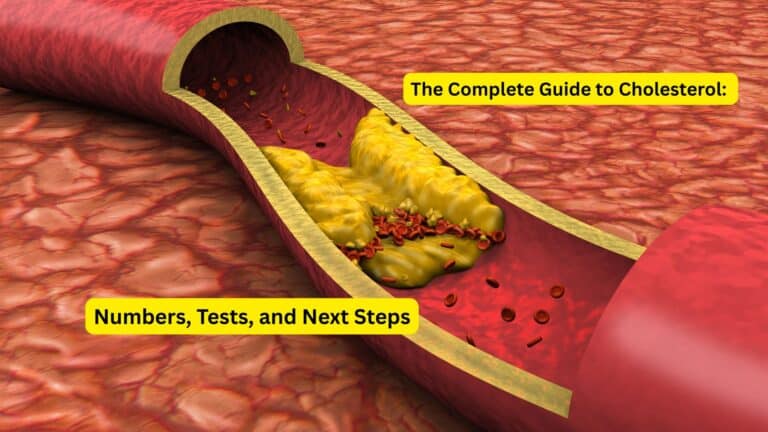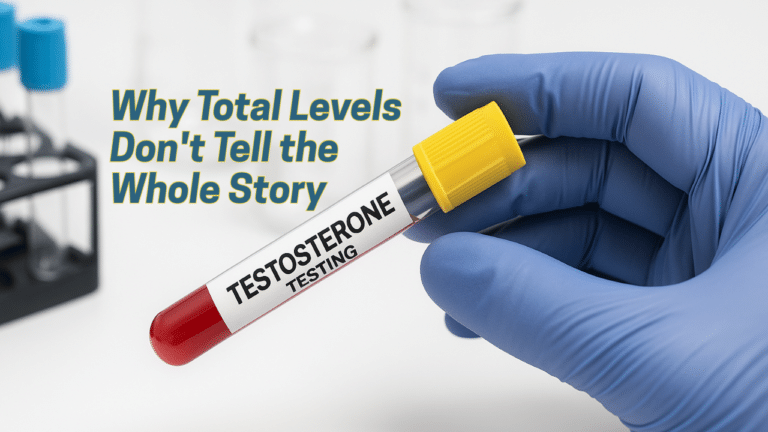Aging is an inevitable biological process that affects every cell, tissue, and organ in the human body. While we often think of aging in terms of visible changes like wrinkles or gray hair, the most profound transformations occur at the cellular and molecular level, years before external signs become apparent. Understanding these underlying mechanisms empowers individuals to make informed decisions about their health and take proactive steps to support healthy longevity.
This article explores the cellular science of aging, examining what truly happens to your body over time and how modern diagnostic testing can help you monitor and manage these changes effectively.
The Cellular Basis of Aging
At its core, aging begins within our cells through several interconnected processes that gradually compromise cellular function and resilience. These fundamental mechanisms form the foundation of how our bodies change over time. The cellular basis of aging encompasses three critical areas: DNA damage and repair, telomere shortening, and cellular senescence.
DNA Damage & Repair
Every day, our cells face thousands of potential DNA-damaging events from both internal processes and external factors. While our bodies possess sophisticated repair mechanisms, the accumulation of unrepaired DNA damage disrupts normal cellular function and drives the aging process. Over time, this molecular damage accumulates faster than our repair systems can handle, leading to cellular dysfunction and increased disease susceptibility.
The DNA repair process becomes less efficient with age, creating a cascade effect where damaged cells either die or become dysfunctional. This decline in repair capacity affects everything from energy production to immune response, making DNA integrity a cornerstone of healthy aging.
Telomere Shortening
Telomeres act as protective caps on the ends of chromosomes, similar to the plastic tips on shoelaces that prevent fraying. With each cell division, these telomeres naturally shorten, eventually reaching a critical length that triggers cellular senescence or death. This progressive shortening effectively limits a cell’s replication capacity, serving as a biological clock that counts down cellular lifespan.
Telomere length decreases by approximately 20-40 base pairs per year in human white blood cells, making telomere measurement a valuable biomarker for biological aging. When telomeres become critically short, cells can no longer divide properly, contributing to tissue aging and reduced regenerative capacity throughout the body.
Cellular Senescence
Perhaps one of the most significant discoveries in aging research is cellular senescence—a state where cells permanently stop dividing but remain metabolically active. These senescent cells don’t simply fade away quietly; instead, they secrete a cocktail of inflammatory molecules known as the senescence-associated secretory phenotype (SASP).
These inflammatory signals can damage neighboring healthy cells and contribute to chronic inflammation throughout the body. As senescent cells accumulate with age, they create an environment that accelerates aging and increases the risk of age-related diseases.
Mitochondria & Energy Decline
Mitochondria, often called the powerhouses of cells, play a crucial role in aging through their declining efficiency and increasing dysfunction. These cellular organelles are responsible for producing the energy our bodies need to function, but their performance deteriorates significantly as we age. Understanding mitochondrial changes helps explain many of the symptoms we associate with getting older, from decreased energy levels to increased susceptibility to metabolic disorders.
Mitochondrial Dysfunction
As we age, our mitochondria become less efficient at producing energy while simultaneously generating more reactive oxygen species (ROS)—harmful molecules that can damage cellular components. Mitochondrial function declines by approximately 8-10% per decade after age 30, directly correlating with the gradual decrease in energy and vitality many people experience.
This dysfunction affects virtually every aspect of cellular metabolism. When mitochondria can’t produce adequate energy, cells struggle to perform their basic functions, from muscle contraction to brain activity. The increased production of ROS also creates oxidative stress that damages proteins, lipids, and DNA within cells.
Connection to Age-Related Symptoms
Mitochondrial decline helps explain many common aging symptoms. Reduced energy output contributes to fatigue and decreased exercise tolerance, while impaired cellular metabolism increases the risk of diabetes and other metabolic diseases. The brain, being highly energy-dependent, is particularly vulnerable to mitochondrial dysfunction, potentially contributing to cognitive decline and neurodegenerative diseases.
This energy crisis at the cellular level creates a cascade of effects throughout the body, making mitochondrial health a critical factor in successful aging and longevity.
Inflammation & Immune Aging
The aging process is intimately connected to changes in our immune system and inflammatory responses. Rather than maintaining the balanced, responsive immune function of youth, aging brings chronic low-level inflammation that can damage tissues while simultaneously weakening our ability to fight infections and diseases. This dual problem—excessive inflammation combined with reduced immune surveillance—represents one of aging’s most significant challenges.
Inflammaging
Scientists have coined the term “inflammaging” to describe the chronic, low-grade inflammation that characterizes aging. This persistent inflammatory state shows cytokine levels that are 2-4 fold higher in older adults compared to younger individuals, creating an environment that promotes tissue damage and accelerates aging processes.
Unlike the acute inflammation that helps heal injuries or fight infections, inflammaging is a smoldering fire that never fully resolves. This chronic state is fueled partly by senescent cells secreting inflammatory molecules, creating a self-perpetuating cycle that becomes more pronounced with age.
Immunosenescence
Alongside increased inflammation, the immune system itself undergoes significant changes with age, a process called immunosenescence. The immune system becomes less capable of responding to new threats while simultaneously becoming more prone to attacking the body’s own tissues. This results in increased susceptibility to infections, reduced vaccine effectiveness, and higher rates of autoimmune conditions.
The combination of chronic inflammation and weakened immune surveillance creates a perfect storm for age-related diseases including cardiovascular disease, cancer, and neurodegeneration. Understanding these changes helps explain why older adults face higher risks for multiple chronic conditions simultaneously.
Epigenetics & Aging Pathways
Beyond the DNA sequence itself, aging involves complex changes in how genes are expressed and regulated. Epigenetic modifications—chemical changes that affect gene activity without altering the DNA sequence—accumulate over time and significantly impact cellular function. Additionally, specific molecular pathways that control cellular metabolism and stress responses become dysregulated with age, offering potential targets for interventions that could slow the aging process.
Epigenetic Alterations
As we age, our cells experience widespread changes in histone modifications and DNA methylation patterns that alter gene expression. These epigenetic changes can silence beneficial genes while activating harmful ones, contributing to cellular dysfunction and disease susceptibility. Unlike genetic mutations, epigenetic changes are potentially reversible, making them an attractive target for anti-aging interventions.
Epigenetic clocks, which measure specific methylation patterns, have become increasingly accurate predictors of biological age, often providing more insight into health status than chronological age alone. These molecular signatures reflect the cumulative impact of lifestyle, environment, and genetics on the aging process.
Key Aging Pathways
Several crucial signaling pathways regulate aging processes throughout the body. The mTOR (mechanistic target of rapamycin) pathway controls cellular growth and metabolism, while AMPK (AMP-activated protein kinase) acts as a cellular energy sensor. The cGAS-STING pathway detects cellular damage and coordinates inflammatory responses.
Research has shown promising results when targeting these pathways. mTOR inhibitors like rapamycin have extended lifespan by 15-30% in animal studies, suggesting that modulating these pathways could potentially slow human aging. However, translating these findings to safe, effective human treatments remains an active area of research.
Understanding these molecular switches provides insight into how lifestyle factors like exercise, caloric restriction, and stress management might influence aging at the cellular level.
Tissue & Structural Changes
While cellular aging provides the foundation for understanding how we age, the visible and functional changes we experience result from alterations in tissues and structures throughout the body. These macro-level changes represent the cumulative effect of cellular dysfunction over time. The aging process affects not only individual cells but also the scaffolding that holds tissues together and the body’s ability to repair and regenerate damaged structures.
Extracellular Matrix Stiffening
The extracellular matrix (ECM)—the network of proteins and other molecules that provides structural support to cells—undergoes significant changes with age. This matrix becomes stiffer and less flexible, contributing to conditions like osteoarthritis and tissue fibrosis. The stiffening of blood vessels contributes to hypertension, while similar changes in other tissues reduce their ability to function optimally.
These structural changes create a feedback loop where stiffer tissues place additional stress on cells, accelerating cellular aging and further compromising tissue function. The loss of elasticity in skin, reduced flexibility in joints, and decreased lung capacity all reflect these fundamental changes in tissue structure.
Decline in Regenerative Capacity
Perhaps one of the most significant aspects of aging is the progressive loss of the body’s ability to repair and regenerate tissues. Stem cells, which are responsible for replacing damaged cells and maintaining tissue integrity, become less active and effective with age. This decline affects everything from wound healing to muscle recovery after exercise.
Brain and muscle degeneration represent common outcomes of this reduced regenerative capacity, contributing to cognitive decline and sarcopenia (age-related muscle loss). The body’s decreased ability to maintain and repair itself becomes increasingly apparent as we age, making preventive care and early intervention increasingly important.
Practical Implications & Testing
Understanding the science of aging translates into actionable strategies for healthier aging and longevity. Modern diagnostic testing allows individuals to monitor key biomarkers of aging, while evidence-based lifestyle interventions can slow many aging processes. The combination of scientific knowledge and practical application empowers people to take control of their aging journey and make informed decisions about their health.
Lifestyle Interventions
Research consistently shows that lifestyle factors significantly influence aging at the cellular level. Regular exercise helps maintain mitochondrial function and reduces inflammation, while proper nutrition provides antioxidants that combat oxidative stress. Quality sleep allows cells to repair damage, and stress management techniques help regulate harmful stress hormones.
These interventions work by targeting the same molecular pathways that drive aging, offering a natural way to slow cellular deterioration. The earlier these practices are adopted, the more significant their impact on long-term health and longevity.
Monitoring Aging Biomarkers
Advanced diagnostic testing now allows individuals to track key indicators of biological aging. Telomere length testing provides insight into cellular aging, while inflammatory markers like IL-6, C-reactive protein, and TNF-alpha reveal the extent of inflammaging. Mitochondrial function and oxidative stress panels can identify energy production issues and cellular damage.
Walk-In Lab offers comprehensive testing panels that measure these critical biomarkers, allowing individuals to assess their biological age and track the effectiveness of their anti-aging interventions. Regular monitoring enables early detection of accelerated aging and provides motivation for maintaining healthy lifestyle practices.
[COMMENT: Insert Walk-In Lab Healthy Aging Test page here]
Frequently Asked Questions
Why do cells age?
Cells age due to the accumulation of molecular damage over time, including DNA damage, protein misfolding, and oxidative stress. Additionally, cellular replication limits imposed by telomere shortening mean that cells can only divide a finite number of times before entering senescence or dying. This combination of accumulated damage and replication limits drives the aging process at the cellular level.
How do telomeres affect aging?
Telomeres act as protective caps on chromosomes that shorten with each cell division. When telomeres become critically short, cells can no longer divide properly and enter senescence or die. This limits tissue regeneration and contributes to aging. Telomere length serves as a biomarker for cellular aging, with shorter telomeres generally associated with biological aging and increased disease risk.
What is inflammaging?
Inflammaging refers to the chronic, low-grade inflammation that characterizes aging. Unlike acute inflammation that helps heal injuries, inflammaging is a persistent inflammatory state that damages tissues and accelerates aging processes. This inflammation is driven by senescent cells, immune system dysfunction, and other age-related changes, contributing to many age-related diseases.
Can lifestyle slow aging?
Yes, lifestyle factors significantly influence aging at the molecular level. Regular exercise, proper nutrition, adequate sleep, and stress management all affect key aging pathways including inflammation, mitochondrial function, and cellular repair mechanisms. These interventions can slow cellular aging and reduce the risk of age-related diseases, though they cannot stop aging entirely.
Are anti-aging drugs available?
While several promising compounds are being studied, most anti-aging drugs remain experimental. Rapamycin, which targets the mTOR pathway, has shown life-extending effects in animal studies but is not approved for anti-aging in humans. Senolytics, drugs that eliminate senescent cells, are in clinical trials. Currently, lifestyle interventions remain the most proven approach to healthy aging.
Conclusion
The science of aging reveals a complex interplay of cellular and molecular processes that gradually compromise our body’s function over time. From DNA damage and telomere shortening to mitochondrial dysfunction and chronic inflammation, understanding these mechanisms provides valuable insights into why our bodies change as we age.
While aging is inevitable, this knowledge empowers us to make informed decisions about our health. By monitoring key biomarkers through appropriate testing and implementing evidence-based lifestyle interventions, we can influence how we age and potentially slow the decline associated with getting older.
The key takeaway is that aging is not simply the passage of time—it’s a biological process that can be understood, monitored, and influenced. Through proactive testing and lifestyle modifications, we can work toward not just living longer, but living better throughout our extended lifespans.
[COMMENT: Link back to pillar “The Complete Guide to Healthy Aging” here]
Disclaimer: This content is for informational purposes only and is not a substitute for professional medical advice, diagnosis, or treatment. Always seek the advice of your physician or other qualified health provider with any questions you may have regarding a medical condition.






